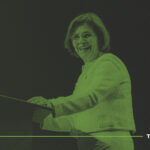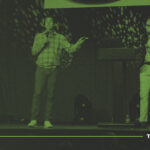When it comes to the canon of Scripture, are 66, 39, and 27 the right numbers? How can we be sure which books belong and which do not?
Mark Mellinger recently sat down with Michael Kruger, president of Reformed Theological Seminary in Charlotte, to discuss this ever-relevant issue of Scripture and canon.
“Matthew, Mark, Luke, and John are the only Gospels we have that come from the first century,” Kruger tells Mellinger. So only those four books could have been written by eyewitnesses. Moreover, the 27 books of the New Testament are the earliest Christian writings we possess—period. When you look at the first century, in other words, there aren’t “a bunch of competing writings,” Kruger explains. “There’s just the New Testament.” Indeed, if you wish to learn about first-century Christianity, the only books available are those in your New Testament.
But what about textual differences? Aren’t there errors among the various manuscripts? “The New Testament is no different than any other historical document when it comes to transmission,” Kruger explains, admitting we find many of the mistakes one would expect with handwritten scribal transmission. Nevertheless, we can recover the original with striking certainty given that we have “far more copies of New Testament writings than of any other document in ancient history.”
The full eight-minute conversation to hear Kruger discuss the authenticity of the (anonymous) book of Hebrews, the church’s role in canonization, where Protestants and Catholics part ways, and more. Kruger has also addressed these issues in Canon Revisited: Establishing the Origins and Authority of the New Testament Books (Crossway, 2012) and The Question of Canon: Challenging the Status Quo in the New Testament Debate (InterVarsity, forthcoming, 2013). For a series aimed at laypeople see Kruger’s “10 Basic Facts about the NT Canon Every Christian Should Memorize.”

































